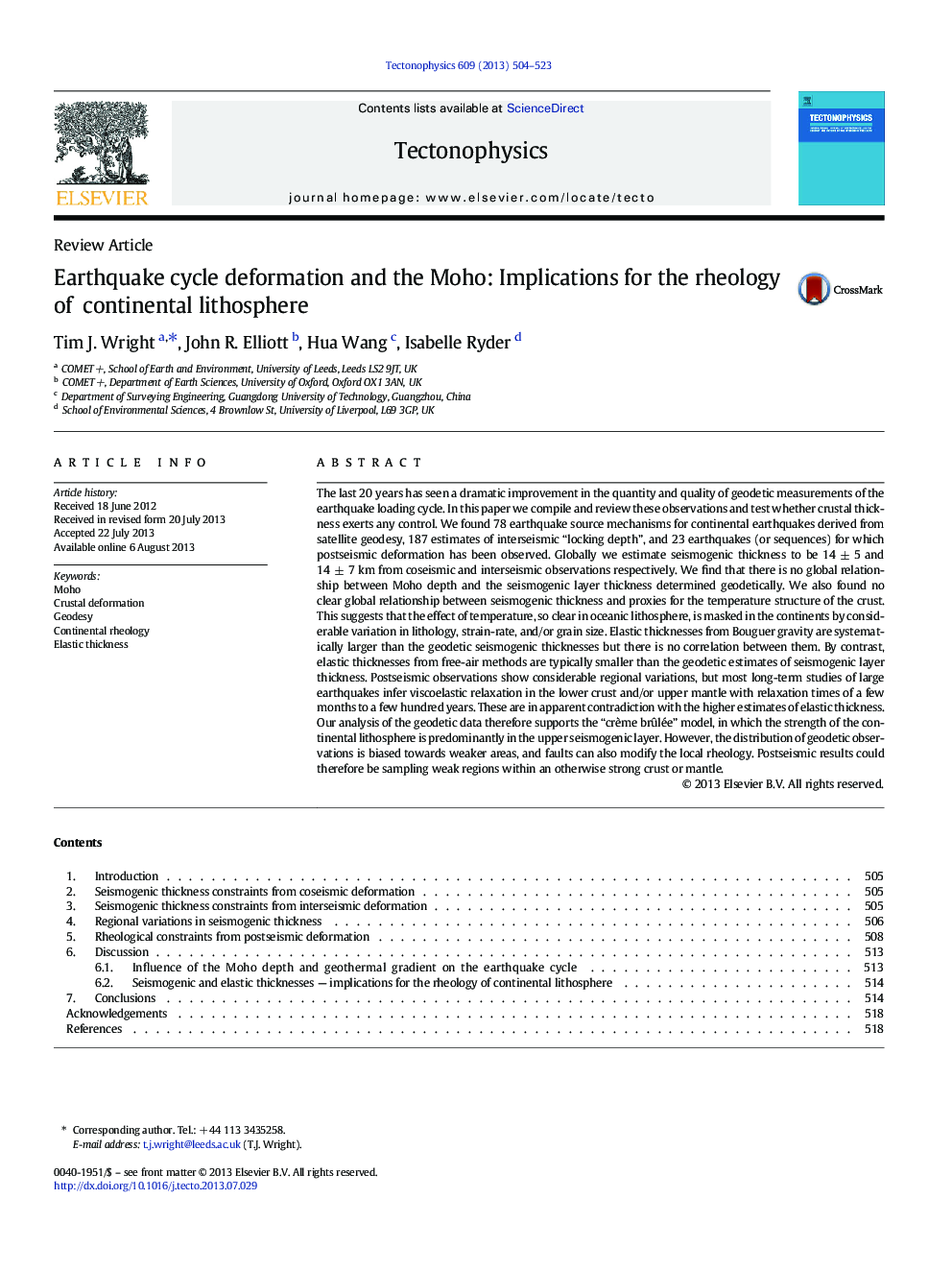| Article ID | Journal | Published Year | Pages | File Type |
|---|---|---|---|---|
| 6434096 | Tectonophysics | 2013 | 20 Pages |
The last 20 years has seen a dramatic improvement in the quantity and quality of geodetic measurements of the earthquake loading cycle. In this paper we compile and review these observations and test whether crustal thickness exerts any control. We found 78 earthquake source mechanisms for continental earthquakes derived from satellite geodesy, 187 estimates of interseismic “locking depth”, and 23 earthquakes (or sequences) for which postseismic deformation has been observed. Globally we estimate seismogenic thickness to be 14 ± 5 and 14 ± 7 km from coseismic and interseismic observations respectively. We find that there is no global relationship between Moho depth and the seismogenic layer thickness determined geodetically. We also found no clear global relationship between seismogenic thickness and proxies for the temperature structure of the crust. This suggests that the effect of temperature, so clear in oceanic lithosphere, is masked in the continents by considerable variation in lithology, strain-rate, and/or grain size. Elastic thicknesses from Bouguer gravity are systematically larger than the geodetic seismogenic thicknesses but there is no correlation between them. By contrast, elastic thicknesses from free-air methods are typically smaller than the geodetic estimates of seismogenic layer thickness. Postseismic observations show considerable regional variations, but most long-term studies of large earthquakes infer viscoelastic relaxation in the lower crust and/or upper mantle with relaxation times of a few months to a few hundred years. These are in apparent contradiction with the higher estimates of elastic thickness. Our analysis of the geodetic data therefore supports the “crème brûlée” model, in which the strength of the continental lithosphere is predominantly in the upper seismogenic layer. However, the distribution of geodetic observations is biased towards weaker areas, and faults can also modify the local rheology. Postseismic results could therefore be sampling weak regions within an otherwise strong crust or mantle.
